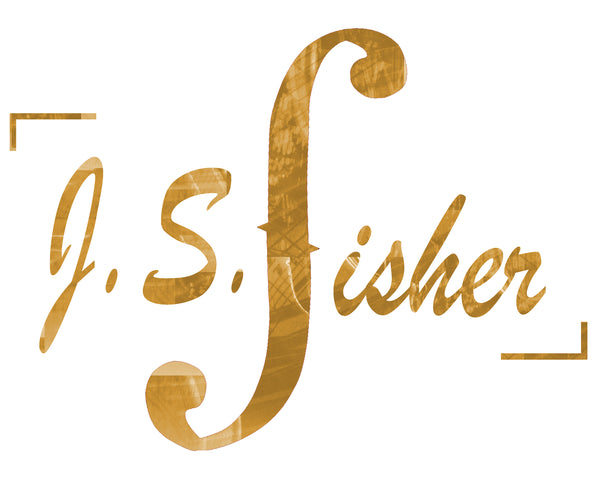The Ideal
The best way to buy a violin is to work with a skilled and trusted dealer. New violins often come from the manufacturer un-adjusted, meaning that the dealer does the final setup of strings, tailpiece, and bridge. That's fine if the dealer knows what he or she is doing, but can be problematic otherwise. And, when buying older instruments, the dealer must have the skill to select quality violins at auction (or elsewhere) and then to fix them up and adjust them properly. If you have a trusted dealer you like, make an appointment. Tell her or him what you're able to spend, the style of music you intend to play, your skill level, and what kind of sound you're looking for. If you're buying for a student, consider renting, at least until your young player is ready for a full sized instrument. Violin selection is complex, so best to let a trusted professional walk you through the process.
When Buying Elsewhere
Many of the violins sold cheaply online are not playable and are jokingly referred to by professionals as violin-shaped objects or VSOs. The following is a minimum list of required characteristics that any violin must have, to be played properly.
- Strings must be the correct height off the fingerboard. On a full-sized violin, there should be approx. 3.5mm (E String) to 5.5mm (G String) clearance at the end of the fingerboard (a bit less for steel strings). At the nut, the clearance should be close to 0.5mm. On smaller instruments, these clearances would be smaller. Strings that are too high result in difficulty with finger placement and intonation. Also, they are hard on the fingers! Strings that are too low will buzz when played.
- Strings must be spaced correctly. On a full-sized violin, at the bridge, the spacing from G string to E string, measuring from the center of each, should be approx. 33.5mm. And, the spaces between all strings should be equal. It is important for the player to be able to place a finger on one string without touching its neighbor. If the strings are placed too close together, this becomes exceedingly difficult.
- The violin must be the correct size for the player. See violin sizing.
- See our article on violin adjustment for more on this topic.
- The bow must be reasonably straight. To check this: With the hair loose and the bow oriented with the hair toward the floor, look down the shaft of the bow from above, with the frog toward you. If the shaft bows to the right or left, it is warped. Some warp is acceptable, particularly if it is bowing to the left ("good" warp), but more than a little will make the bow difficult to play. Also check for twist by placing the bow on a table, hair down, with the frog flat on the table surface. Now, check the tip. If the tip is not also sitting flat on the table - if it twists to the left or right, then the bow may be difficult to play correctly.
- The bow must be reasonably stiff. We're talking here about how strong the stick is - how resistant to bending. If, the shaft of the bow bends so much that it crushes the hair between bow and strings when playing (with reasonable bow pressure) then it is not strong enough for proper playing.
Sad to say, many cheap violins and bows do not meet the above requirements, so buyer beware. However, there are older, relatively inexpensive instruments that have been knocked about over the years, that have been setup correctly by a luthier. These can be suitable for beginners. Though the tone may not be all that could be desired, it is at least possible to learn proper technique if the basics are there.
Still, it's much more enjoyable to play an instrument that produces a pleasant tone, so it may be worth spending a few hundred more for a better fiddle. Or, consider renting an instrument, if you have a reputable shop nearby. Renting allows you to get started with a better instrument, without the financial commitment. And, for younger players, you can usually trade up sizes, as needed, without having to purchase a whole new violin every few years.
But, whether you rent or buy, here are a few more things to ask about or look for, if you want something more than the bare minimum. . . .
Other Things to Look For
- Are there any obvious signs of damage? Check for cracks, open seams where the front and back meet the sides, etc.
- Do the pegs and fine tuners operate properly?
- What kind of strings are included? (If plain, un-wound steel strings, like Red Label, consider upgrading to something better.
- Ask the seller to play it for you. How does it sound to you?
- Peek inside the violin through the f-hole on the E-string side. There should be a small, round, piece of wood (sound-post), somewhat thinner than a pencil, under and little south of the bridge, supporting the belly and keeping the violin from collapsing on itself under the pressure of the strings. If this is missing or crooked, that's a bad sign.
- Take a look at the quality of the bridge. Does it appear to be carved with skill and care? Although this is not necessarily an indication of the quality of the violin, it will certainly tell you something about the skill of whoever set the violin up. Do the feet sit perfectly flat on the top of the violin? Is the bridge straight, or has it warped? Have the strings dug deep channels into the bridge where they touch?
Again, if possible, the best thing to do is to purchase from a reputable dealer, and/or have a professional look the violin you intend to buy over, before you buy.
